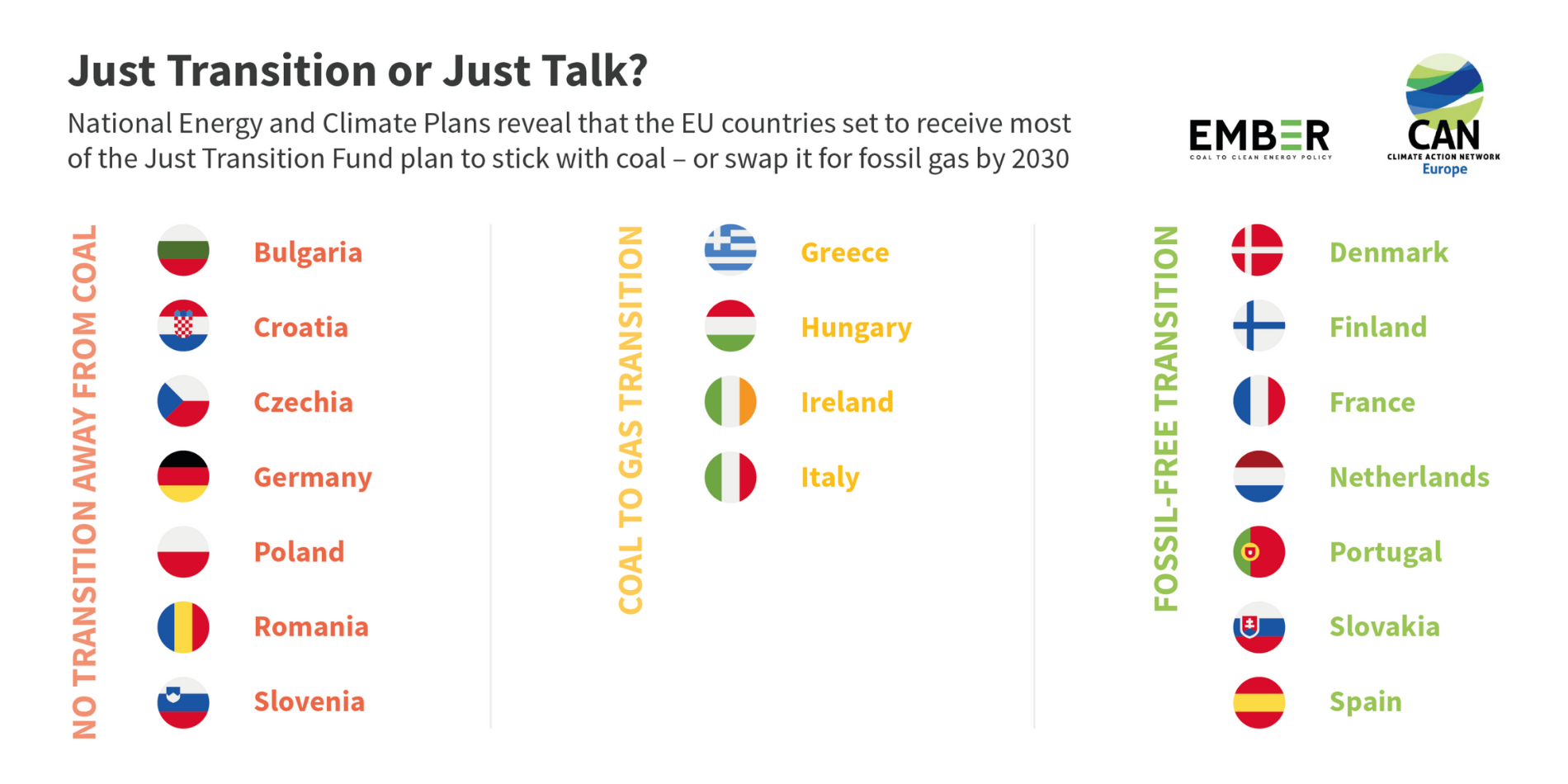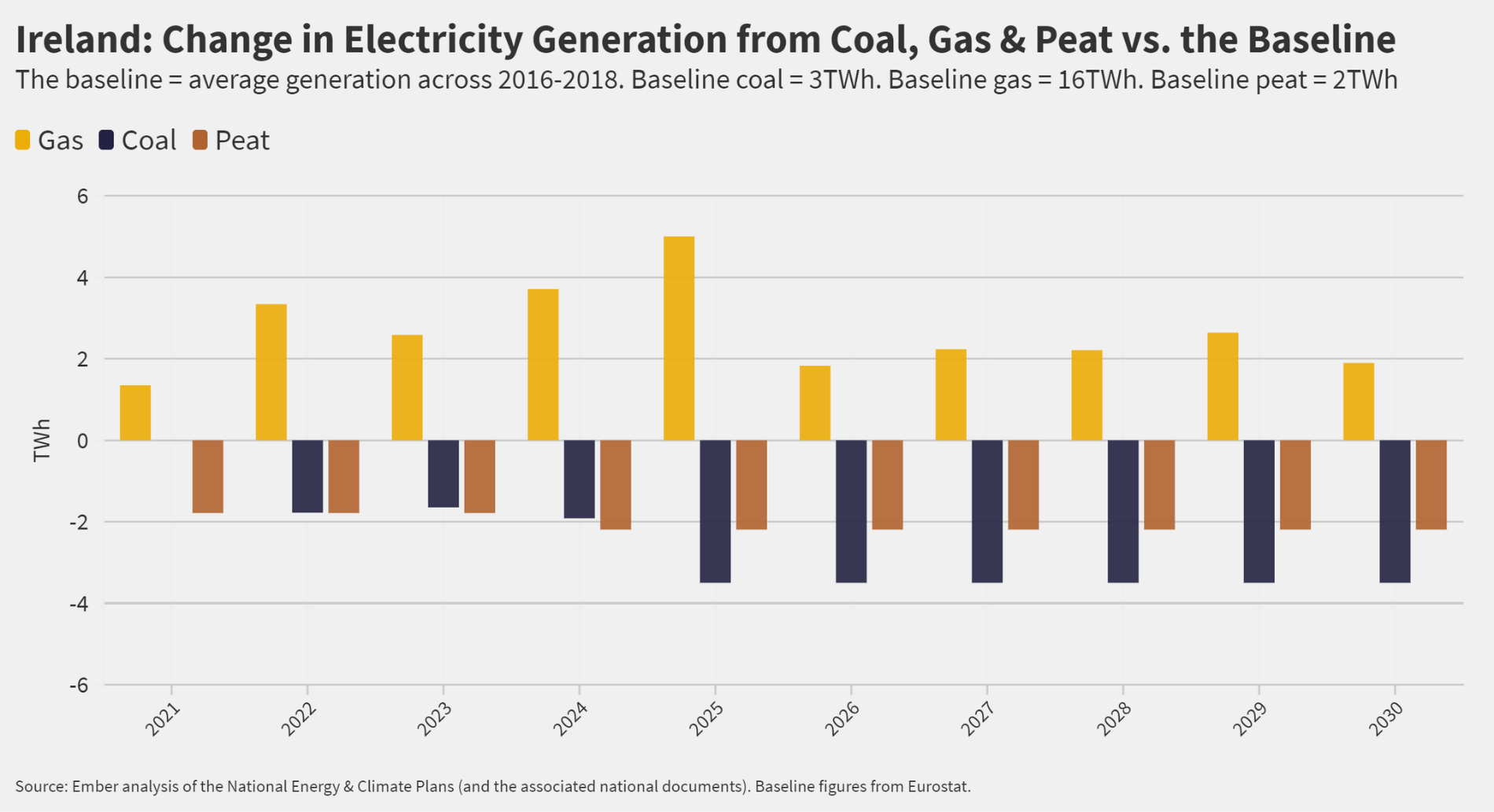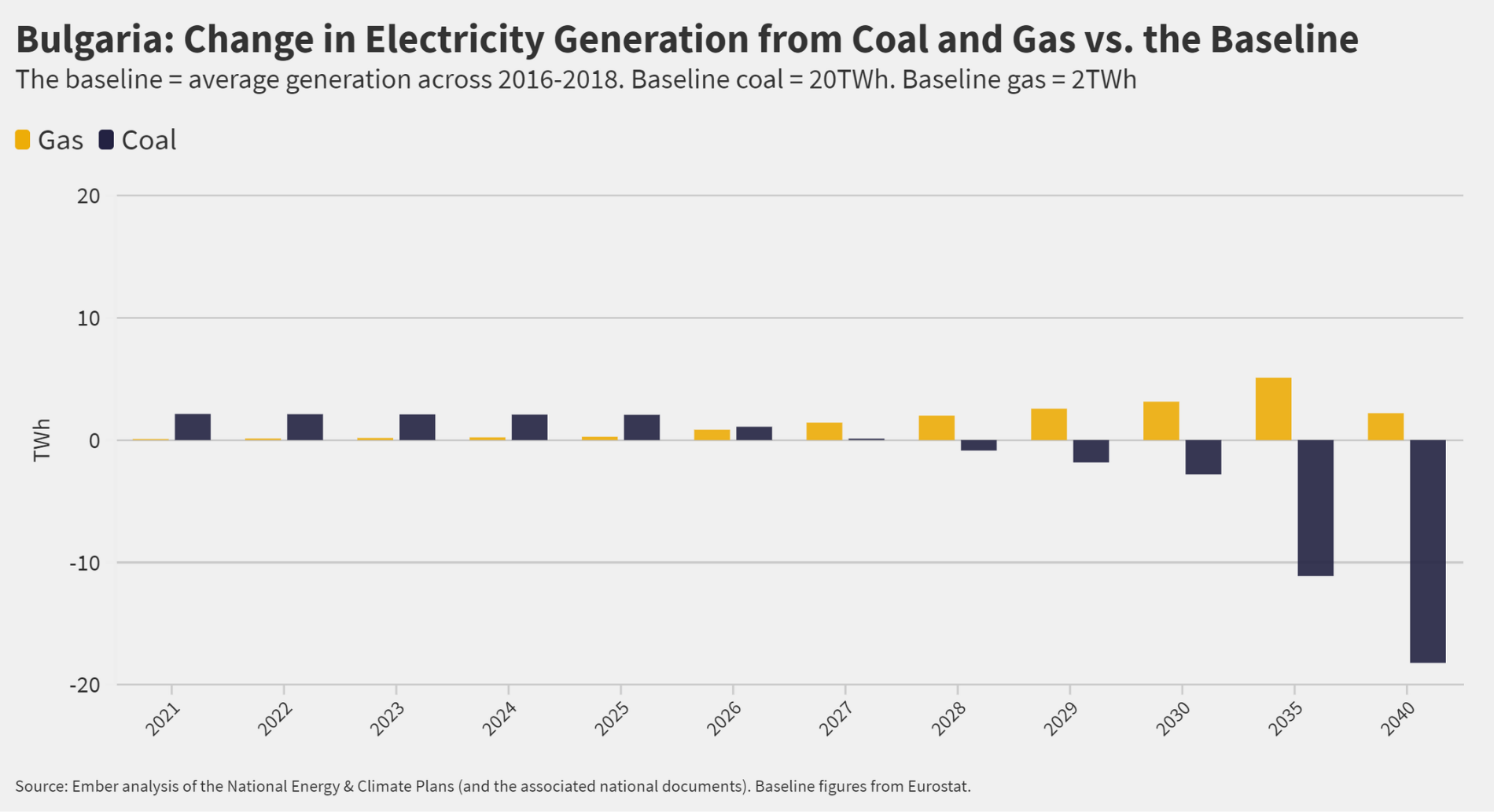About
In this report, produced with Climate Action Network (CAN) Europe, we examine the final National Energy and Climate Plans (NECPs) of 18 EU Member States which still use coal for electricity generation.
We assess whether the plans for coal are in line with the EU’s climate commitments and whether the Just Transition Fund would therefore be used to support a real transition in these EU coal-countries.
We find that 11 out of 18 EU coal-countries do not have a Paris-compatible plan to phase-out coal.
Executive summary
Just transition or just talk?
7 countries plan to stick with coal beyond 2030 – but look set to receive most of the Just Transition Fund.
4 countries plan to phase-out coal by 2030 – but will swap it for fossil gas.
7 countries are on track for a 2030 coal phase-out without a significant increase in fossil gas
Elif Gündüzyeli Senior Coal Policy Coordinator, CAN Europe
As one of the first pieces of legislation of the European Green Deal, the Just Transition Fund must live up to its name by supporting real transition, not talk. If the EU wants to show commitment to the Paris Agreement, no coal power plant should be operational beyond 2030. Transition means change to clean, renewable energy – not fossil gas. Coal regions need future-proof investments in the new economy, not further entrenchment in fossil-fuel dependency.
Key findings of the NECP analysis
11 out of 18 EU coal countries do not have a Paris-compatible plan to phase out coal
In this chapter:
7 countries are on track to phase-out coal by 2030 – without a significant increase in fossil gas: Denmark, Finland, France, the Netherlands, Portugal, Slovakia & Spain.
Policy Recommendations
Support from the Just Transition Fund must align with Paris-aligned targets
The upcoming programming of all Cohesion Policy Funds must embrace the transition towards climate neutrality in an integrated manner. Member States should design their Territorial Just Transition Plans to ensure complementarity within all the various funding streams available.
Conclusion
Just transition or just talk?
The CECPs of the seven Member States (Bulgaria, Croatia, Czechia, Germany, Poland, Romania, Slovenia) who are in line to receive the lion’s share from the Just Transition Fund do not have plans to phase-out coal in the next decade. The NECPs show that a number of them are also planning a significant and increased role for fossil gas in their electricity transitions. Moreover, of the eleven countries expected to phase-out coal by 2030, our analysis indicates that four (Greece, Hungary, Ireland and Italy) are planning a significant coal-to-gas transition.
The EU must achieve climate neutrality by 2040 in order to do its fair share under the Paris Agreement, to limit the global temperature increase to 1.5C. This means all Member States should phase out coal by 2030, and all fossil fuels by 2040 at the latest.
National Energy and Climate Plans (NECPs) demonstrate that many Member States are not even in line with the European Green Deal’s 2050 climate neutrality objective, and its new emission reduction targets by 2030. Let alone compatible with the EU’s fair share under the Paris Agreement.
The Just Transition Fund can be an important instrument to help mitigate the social, economic and environmental impacts of this rapid energy transition in the regions that are most vulnerable. It is created as a tool to specifically support the European Green Deal’s mid-century climate neutrality objective, and 2030 emission reduction targets, without leaving anyone behind.
According to the International Trade Union Confederation (ITUC), “A Just Transition is an economy-wide process that produces the plans, policies and investments that lead to a future where all jobs are green and decent, emissions are at net zero, poverty is eradicated, and communities are thriving and resilient” [30]. As the first piece of legislation in the European Green Deal, the Just Transition Fund should reflect the objectives of just transition, and set the example for the other legislative processes.
However, without improvements to its design – as recommended in this briefing – the Fund risks rewarding climate laggards at the expense of real climate leaders.
Supporting Material
Methodology
Coal Capacity
2020 installed capacity is sourced from the latest (17.07.20) version of the Europe Beyond Coal database – https://beyond-coal.eu/data/.
Installed capacity is the sum of all units marked as “open” under the category “unit status (gross)”, this includes plants which are marked as open in the database but sub-categorised as on standby, under retrofit or deactivated (BG – 0.5GW, CZ – 0.4GW, DE – 5.4GW, DK – 0.9GW, ES – 0.3GW, GR – 0.6GW, IT – 0.6 GW, HR – 0.1 GW, HU – 0.2GW, PL – 0.8GW, RO – 0.7GW).
The figures in the Europe Beyond Coal public database are provided as gross MW, a gross to net conversion factor of 92% is applied for units that commenced operation pre-1980, 94% for all other units.
When the NECP provides projections for both existing policy measures (WEM) and with additional policy measures (WAM), the 2030 figures are preferentially sourced from the WAM projections.
The 2030 coal capacity figures are not available for Czechia in the NECP, however the NECP contains projections for net electricity generation from coal (TWh) in 2030 and 2020. We have used the ratio of 2030 to 2020 electricity generation from coal and applied this to the current (17.07.20) installed coal capacity to forecast installed coal capacity in 2030. (N.b this assumes load factor across the remaining fleet remains constant).
Acknowledgements
Pete Tunbridge (Ember), Małgorzata Kasprzak (Ember), Euan Graham (Ember), Markus Trilling (CAN Europe), Magdalena Klarenbach (CAN Europe).
Input from national partnersGenady Kondarev (Za Zemiata – Friends of the Earth Bulgaria), Joanna Flisowska (Greenpeace Poland), Nikos Mantzaris (Green Tank), Laura Nazare (Bankwatch Network Romania), Antonio Tricarico (Re:Common), Alexandru Mustata (Bankwatch Network Romania), Constantin Zerger (Deutsche Umwelthilfe), Ricarda Dubbert (Deutsche Umwelthilfe), Edoardo Zanchini (Legambiente), Massimiliano Varriale (WWF Italy), Izabela Zygmunt (Bankwatch Network Poland), Alexa Botar (National Society of Conservationists – Friends of the Earth Hungary).
ImagesFront & back cover – via Unsplash: Lars Kuczynski; p4 – Maryna Yazbeck; p6 – Didier Weemaels; p10 – Curioso Photography; p25 – Nicholas Doherty. p21 – alvarez from iStockphoto
Report designWilf Lytton











